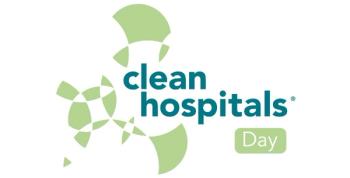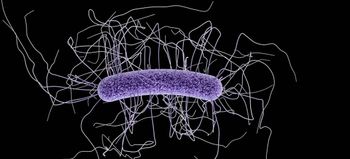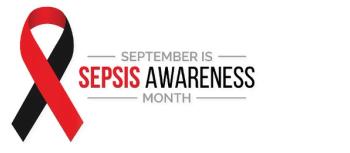
Take 5 minutes to catch up on Infection Control Today’s highlights for the week ending October 21.

Take 5 minutes to catch up on Infection Control Today’s highlights for the week ending October 21.

Several previously healthy children were admitted for suspected hepatitis and tested positive for human adenovirus. Was there a connection?

Ellie Wishart, BSc, Real World Evidence Manager at Ecolab discusses the role of industry partners in the Clean Hospitals initiative and taking part in the International Clean Hospitals Day Conference in Geneva, Switzerland, on October 20, 2022.

Using COVID-19 precautions, and enhanced contact precautions and environmental hygiene, a COVID-19 isolation ward was able to contain an outbreak of CRAB.

Investigators search for increased speed, reliability, and durability in susceptibility testing for C difficile.

The Clostridioides difficile Health-related Quality-of-Life Questionnaire responses demonstrated patients handled the situation better with specific investigational treatments.

A recent study demonstrates a tool to help physicians better diagnose the cause of fevers in children.

Pierre Parneix, MD, speaks with Infection Control Today® on his work as the president of the French Society for Hospital Hygiene, his work with the Clean Hospitals, and his outlook on France’s fight against infectious disease in the near future.

Saskia v. Popescu, PhD, MPH, MA, CIC, covers updates on COVID-19 in frontline workers, an Ebola outbreak in Uganda, and ocular and needlestick monkeypox.

Environmental hygiene issues are rampant throughout every country in the world. From not enough resources to too few personnel, hospitals face difficulties that put patients at risk.

Take 5 minutes to catch up on Infection Control Today’s highlights for the week ending October 14.

The additive effects of long COVID-19 with repeat infections, combined with the long-term persistence of long COVID-19 systems, does not bode well for the United States’ workforce. N95 masks, vaccines, boosters, and improvements in ventilation are keys to prevention.

During Sterile Processing Week, ICT® recognizes the job of sterile processing personnel as highly skilled labor in an uncomfortable work environment. It is also dangerous to those individuals who may pass through the room the sterile processing personnel are working in.

Winter is coming, which means influenza and COVID-19 rates are rising, but IPs have more issues like monkeypox and Ebola to contend with also.

Didier Pittet, MD, MS, CBE, a renowned epidemiologist, joins ICT® ahead of the upcoming Clean Hospitals Day Conference to discuss the biggest challenges that environmental hygiene personnel face.

Take 5 minutes to catch up on Infection Control Today’s highlights for the week ending October 7.

COVID-19 has not been the only pathogen that has been spreading the last few years. Candida auris has taken a hold, not only in the United States but around the world. Here are the details and how environmental hygiene practices can protect patients in a health care setting.

Because of mask-wearing and social distancing, numbers of influenza cases have been down the last 2 years. However, experts say numbers this year could go back up to numbers in prior years. The public and health care workers alike need a nudge to get vaccinated.

The Association for Health Care Environment (AHE) annual conference brings together those individuals passionate about environmental hygiene. Rock Jensen, the AHE president for the board of advisors, describes to ICT® the goals of this year's conference.

Take 5 minutes to catch up on Infection Control Today’s highlights for the week ending September 30.

A sepsis diagnosis is expensive and deadly, and early detection and treatment are key to saving lives. However, sepsis is not always easy to diagnose early, so a new advanced analytics surveillance tool can increase the chances of an improved outcome.

Many studies have been done on how to increase hand hygiene adherence. However, ICT® decided to go to the source and ask the health care workers themselves why they do not always follow hand hygiene.

Thorough cleaning and disinfection reduce the role fomites play in the spread of disease.

Environmental services teams (EVS) are crucial players in ensuring patient satisfaction and combating health care–associated infections, yet, too many EVS teams are invisible. They deserve recognition, and this article by environmental hygiene experts explains why and how to give appreciation effectively.

How infection preventionists communicate with those individuals with whom they interact is a tightrope of how to do it well and effectively. Read this article from readers' favorite, Heather Saunders, MPH, RN, CIC, to find out how to not fall off that tightrope in her second of 3 series on the 3'Cs of how to be a successful IP.